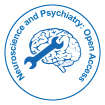Current Trends in the Treatment of Subarachnoid Hemorrhage Secondary to Aneurysmal Rupture
Received Date: Nov 17, 2017 / Accepted Date: Jan 30, 2018 / Published Date: Feb 06, 2018
Abstract
Introduction: Aneurysmal subarachnoid hemorrhage (ASH) is a very serious phenomenon associated with high rates of morbidity and mortality. After the initial hemorrhage, 50% of patients die, and 30-40% of patients re-blood during the first month. The percentage of deaths due to re-bleeding is between 60% and 75%. Re-bleeding prevention with both endovascular embolization and surgery, decrease mortality and improve the quality of life of survivors. Nowadays, endovascular embolization has become the method of choice to prevent re-bleeding especially in Europe largely replacing surgery.
Objective: The aim of this study was to describe a series of patients with spontaneous subarachnoid hemorrhage treated at the University Hospital of Getafe, Madrid between 1995 and 2015 (n=343; 185 surgically and 158 endovascular embolization), analyze the diagnosis and treatment, establish main prognosis factors and compare the results of both treatments (clip and coil). We have made a retrospective study, by reviewing medical history, analyzing epidemiological data.
Results and discussion: We studied a total of 343 patients, 185 Surgery and 158 Embolization. It has been shown that embolization, the treatment of choice today, has decreased the number of complications in these years. The long period of time analyzed, 20 years, does not allow a homogeneous study of the sample due to changes in the diagnostic and therapeutic criteria, but allows obtaining interesting results and conclusions.
Conclusion: It has been established that the performance of brain computed tomography (CT) and arteriography, and ICU admission, is the best medical management in these patients. In this study, clinical income situation, the amount of blood in CT and the patient’s age, have proved the most decisive factors in the final outcome. Endovascular embolization is a safe method of treating ruptured aneurysms.
Keywords: Subarachnoid hemorrhage; Intracranial aneurysm; Therapeutics; Prognosis
Citation: Zufiria JMO, Ferncandez PJ, Nunez PPD, Degenhardt TM, Serrano LR (2018) Current Trends in the Treatment of Subarachnoid Hemorrhage Secondary to Aneurysmal Rupture. Neurosci Psychiatry 1: 101.
Copyright: © 2018 Zufiria JMO, et al. This is an open-access article distributed under the terms of the Creative Commons Attribution License, which permits unrestricted use, distribution, and reproduction in any medium, provided the original author and source are credited.
Share This Article
Open Access Journals
Article Usage
- Total views: 4556
- [From(publication date): 0-2018 - Apr 02, 2025]
- Breakdown by view type
- HTML page views: 3625
- PDF downloads: 931
